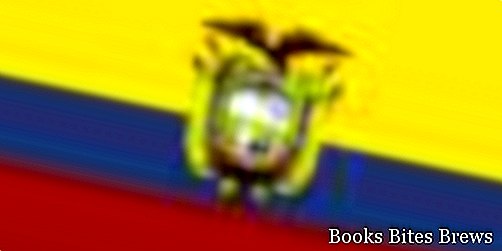Useful tourist information about Ecuador, with all the things to know before leaving, for a trip or a holiday in this state of South America.
Ecuador in a nutshell
- Capital: Quito
- Area in sq km: 283.561
- Population: 13,500,000 (first half 2006)
- Catholic religion
Where is it
The Republic of Ecuador is so called because it lies astride the Equator line. It borders Colombia to the north, Peru to the east and south and faces the Pacific Ocean to the west.
Ecuador is crossed from north to south by two parallel Andean volcanic chains: the Western Cordillera and the Royal Cordillera, dominated by imposing volcanic cones, such as the Chimborazo, about 6300 meters high.
On the coastal strip there is a flat, low and marshy region, while the eastern part of the country includes a small part of the Amazon river basin, covered by impenetrable forests.
The Galapàgos Islands belong to Ecuador, an archipelago of volcanic islands located in the Pacific Ocean about 1000 km from the coast.
Hydrography
Ecuador's hydrographic network is made up of the rivers that flow to the Pacific Ocean: Esmeraldas, Babahojo, Guayas, and the direct or indirect tributaries of the Amazon River: Rio Napo, Pastaza and Tigre.
Climate
In Ecuador various climatic zones can be distinguished
The coast is affected by ocean currents, and has a hot and humid season (January / April), with abundant rains and a dry season (May / December) with cooler temperatures of a few degrees and without rain.
In the Andean region the climate is influenced by the height of the hills, so there are:
- hot lands, from sea level up to 1000 meters high
- temperate lands, from 1000 to 2000 meters high
Recommended readings- Ecuador: general information
- Quito: what to see in the capital of Ecuador
- Galapagos: what to see in the Pacific islands
- cold lands above 2000 meters high
- the eastern part of the country is hot and rainy all year round
The Galapàgos islands have a hot season, with sunny days accompanied by short and abundant rainfall, in the period December / May.
From June to November the season is dry, there is often a mist, the air is cooler and more windy.
Population
The population of Ecuador is made up mostly of Indians and mestizos, a minority of Creoles, descendants of Spanish and African colonists.
Time zone
In Ecuador it is necessary to move the clock hands 6 hours backwards, compared to Italy 7 hours backwards when daylight saving time is in effect.
The Galapagos Islands are 7 hours behind Italy, 8 hours behind when Italy is in summer time.
Spoken language
The official language of Ecuador is Spanish.
The Quechua language, which was the official language of the Inca Empire, is also spoken.
Economy
In Ecuador the living conditions of a large part of the population are very modest.
The country has a fragile and dependent economy from abroad, despite having moderate potential and resources.
Oil is exported, thanks to the presence of significant oil fields in its subsoil.
The agriculture of the coastal region is characterized by products intended for export, especially bananas and then coffee, cocoa, sugar, tobacco, cotton, citrus fruits, while on the sierras, where large properties alternate with small, unproductive funds, potato crops prevail. , wheat, corn and cereals.
The fish sector is flourishing thanks to the breeding and export of prawns, lobsters and tuna fishing.
As far as industry is concerned, its development is limited and concerns the mining, textile, food, chemical and tobacco sectors.
A typical Ecuadorian product is a special straw made from a variety of palm (Carludovica palmata) with which Panama hats are made.
When to go
Ecuador can be visited all year round. On the coast and the Galapàgos Islands during the months that go from December to May, during the rainiest season, the sea water is warmer than in the other months of the year.
On the plateaus the best period is the dry one: from June to August. In the Amazon, the eastern part of the country, the climate is always hot and rainy.
Requested documents
To enter Ecuador you need a valid passport.
A visa is not required for a maximum of 90 days of stay, but a residence permit (T3) is issued upon entry to the country, which must be combined with the passport and kept during the period of stay in the country.
Phone
- The international telephone code to call from Italy to Ecuador is: 00593
- The international dialing code for making calls from Ecuador to Italy is: 0039
Electricity
The electric current in Ecuador is 110 volts, therefore an adapter is required.
Money and credit cards
Ecuador's currency is the US dollar (US $).
The main credit cards are accepted only in large hotels and tourist areas, the withdrawal to the ATM by credit card is offered by banks, but not by all agencies.
How to get
There are no direct flights from Europe to Ecuador. International airports are in Quito and Guayaquil. The airlines Delta Airlines and American Airlines, have connecting flights from Italy to Quito, with a stopover in Miami in the United States.
With the Klm and Iberia airlines, the flight from Italy to Ecuador provides only one stop for changing the aircraft:
- Klm stopover in Amsterdam
- Iberia stopover in Madrid
From Madrid, the Colombian flag carrier Avianca, organizes flights to Quito with a stopover in Bogota in Colombia. A boarding tax must be paid upon departure from Ecuador.
Vaccinations
- vaccinations against tetanus and hepatitis A
- malaria prophylaxis and vaccination against yellow fever for those visiting the Amazon rainforest and coastal area
It is also recommended to drink only bottled water and soft drinks without adding ice, to avoid fresh fruit juices and raw vegetables.




